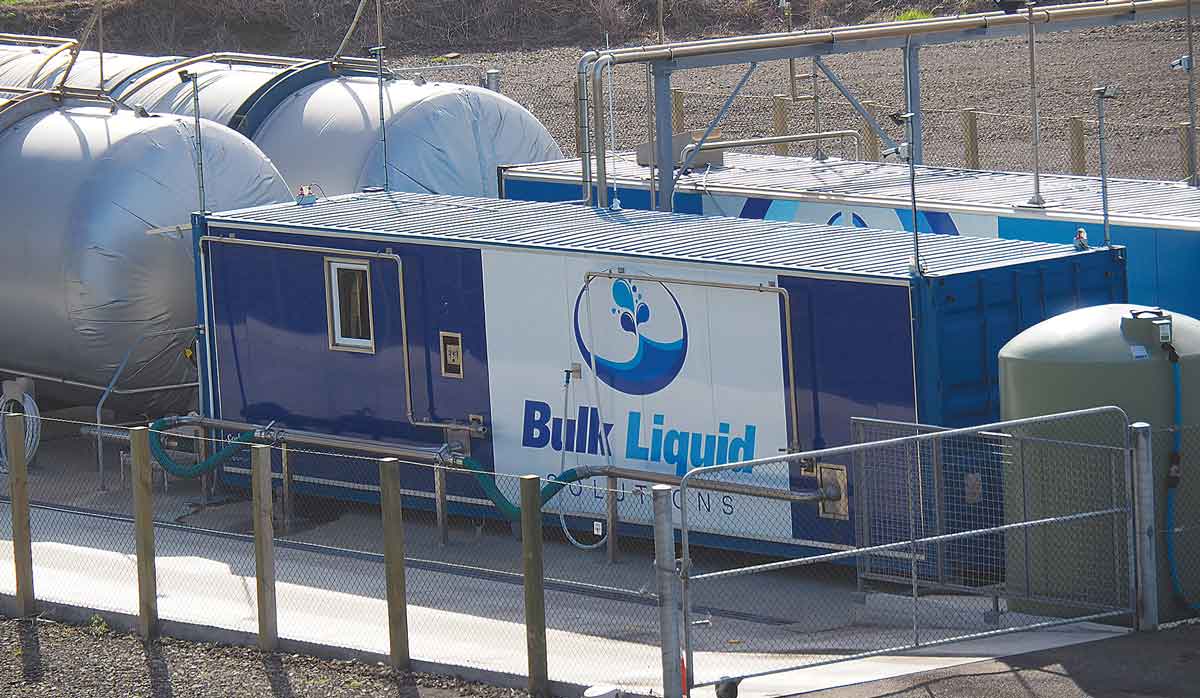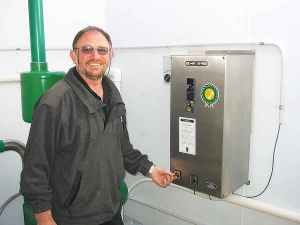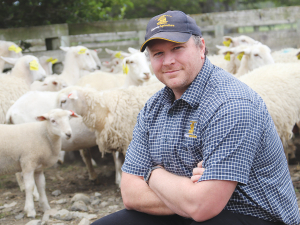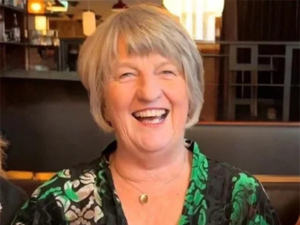Steve, who owns Corkill Systems Ltd, has many inventions up his sleeve.
One such invention is Varivac, a Corkill Systems invention, designed by Steve.
“It’s an electronic controller for the vacuum pumps. It saves them around 40% in their dairy shed power usage,” Steve says.
“It was the first in the world of its kind, and that was back in 1996.”
He trademarked the Varivac in 1999 but he says many competitors have gone on to replicate it.
“The Varivac name has become like jandals or the chilly bin - a generic name for a vacuum pump controller, and yet we own the name,” Steve says.
Born and bred on a dairy farm in Opunake, Taranaki, Steve did his electrical apprenticeship with one path in mind – and it wasn’t dairy.
“The only reason I did it was somebody told me that a New Zealand registered electrician can get a job anywhere around the world and my only ambition at the time was to travel,” Steve says.
So he bought a one way ticket to the UK in 1975 and began working on oil rigs firstly in the North Sea and then various Middle Eastern and South Asia countries. After 11 years overseas, his dad fell ill so Steve returned home with his then-girlfriend, now-wife Rosie from Switzerland.
He started doing the odd electrical contracting job for old friends, which snowballed into a business with 17 staff in a decade. Steve sold Corkill Electrical Limited in 2001 to focus on his young family and work on his side interests.
“I was developing products for energy efficiency and milk quality for dairy farms,” he says.
“They were essentially my hobby, so I retained two staff and we are now twelve including my son who is intent on taking the business to new levels.”
Now known as Corkill Systems Ltd, the company has helped drive dairy innovation in New Zealand, which he felt was behind the times in terms of automation.
“Dairy farming has taken a lot of flak in the media over the last few years,” Steve says. “Markets have changed, prices are down, what we do is helping the national dairy business improve their margins and therefore making them more viable.”
Another of Steve’s inventions is the Milkflow electronic controller for the milk pumps in dairy sheds that was designed back in the 1980’s.
“People were pumping milk dry, aerating it. This is incredibly damaging to milk.
“Up to 8% damage to the milk solids, which is 8% off what the farmers are being paid. That’s the cream on the cake really when you’re talking about profit on a dairy farm.”
Milk handling
By inventing the Varivac and Milkflow systems, Steve Corkill stumbled onto another problem facing farmers - existing pumps being used weren’t up to scratch. So he decided to design a pump specifically for milk handling.
He owns moulds in China and pumps are manufactured there in a German joint venture factory. These are used for everything from honey to tallow.
“It’s a traditional rotary lobe pump design but modified so instead of high speed, high pressure, low volume, they’re high volume, low speed and pressure,” he says.
“The fundamental design has been around for 100 years, but not the way we build it.”
 |
|---|
The big transfer pumps in the pump stations move over five litres per revolution, the smaller ones used in dairy sheds can save a dairy farmer 4-5% by reducing damage to his milk solids.
“They move the milk without damaging it. Literally, you could probably pump raw eggs through it and not break them,” he says. “I’m quite chuffed with the design.”
Corkill sees that he can fix things, rather than invent them.
In recent years Corkill Systems have been building pump stations to move bulk milk for improved efficiency.
Tankers picking up milk from farms are limited in size on many council type roads to 44 tonnes maximum weight. The smaller tankers deliver to the pump stations Corkill builds for Dynes’ transport subsidiary Bulk Liquid Solutions. They then move the milk into long haul 57-58 tonne tankers to take the milk to where the processors can get the best end product value.
There are currently nine stations strategically placed all around the country – from the bottom of Southland, to the top of Northland, including one in Opunake – they’re currently building number station number ten.











